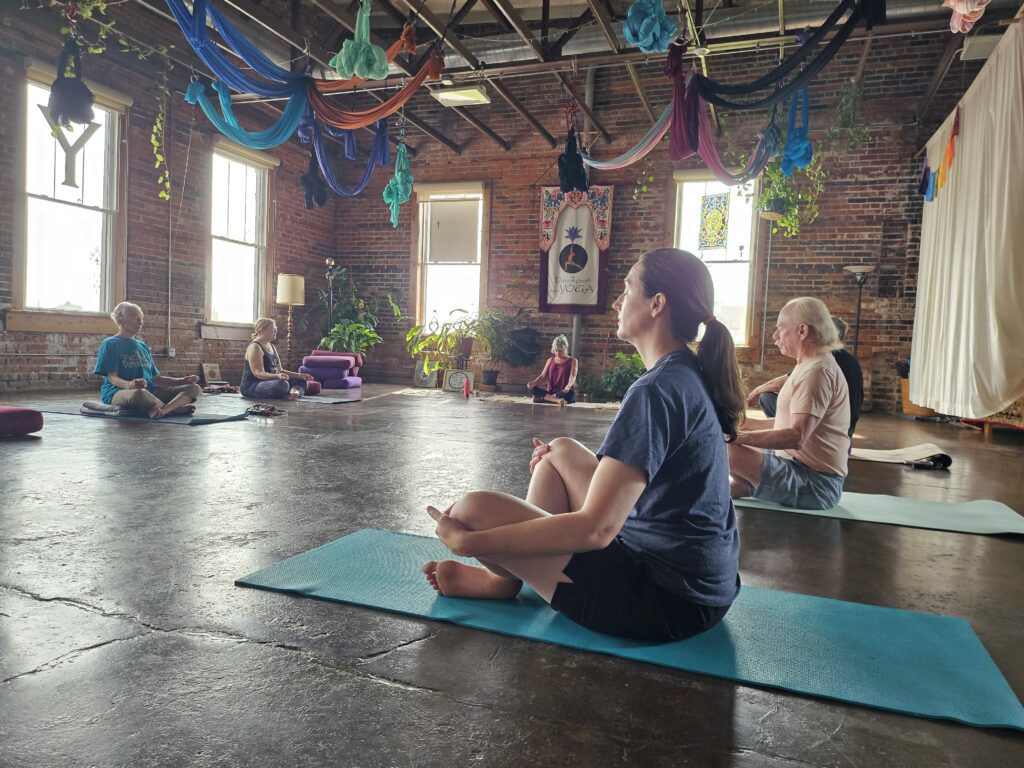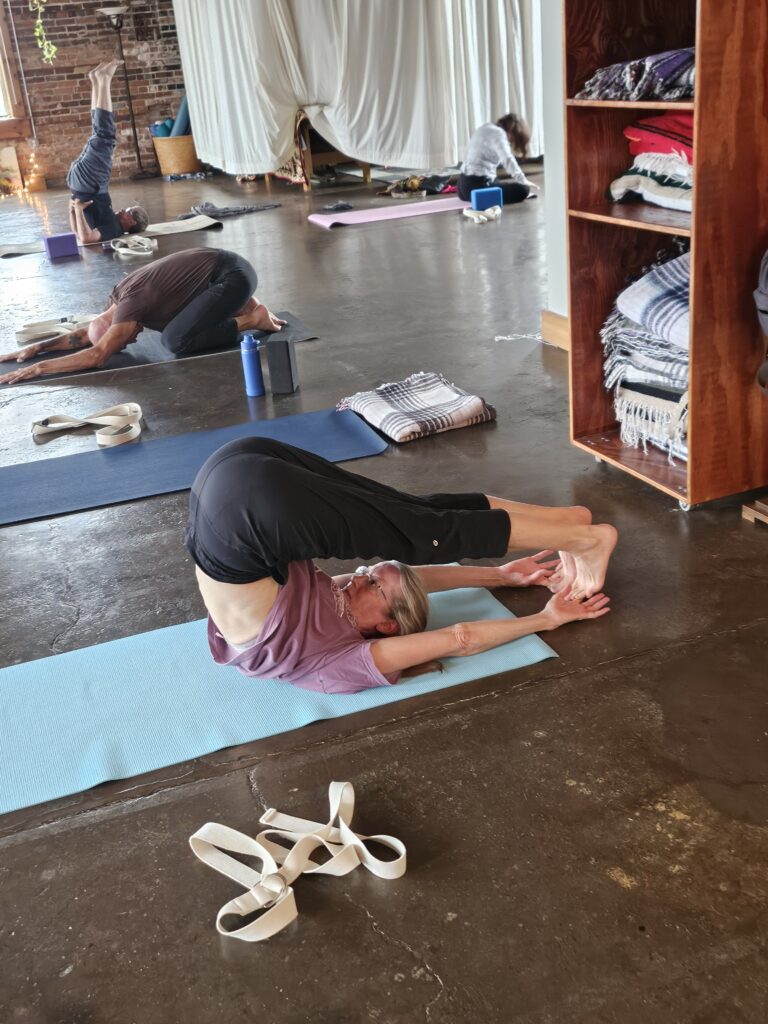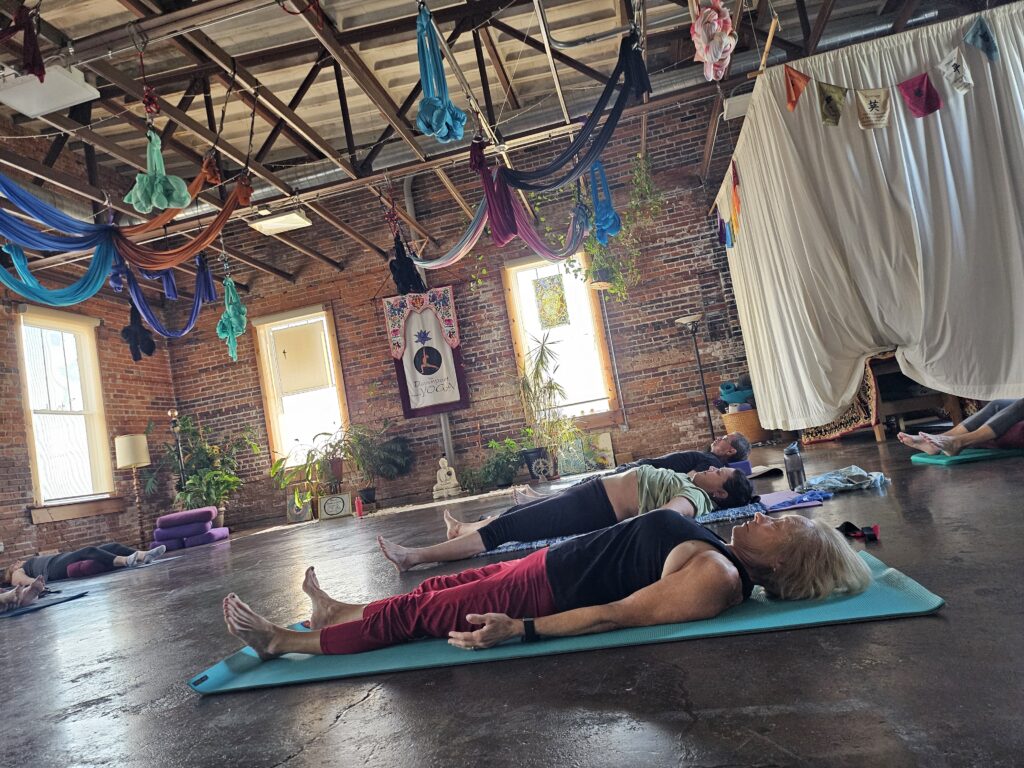Certainly, you have heard of yoga. It is currently enjoying immense popularity and, in addition to yoga studios offering its instruction exclusively, it is available at most gyms and health clubs, as well as many church basements, libraries, and living rooms. While this popularity has made the practice available to many more than would have had access to it a century ago, it has also spread some ideas about yoga through our culture. These can be intimidating for newcomers. If you are new to yoga, here’s what you need to know.

Often the media portrayal of yoga poses is extreme, but most are very straightforward and simple. They are easy to learn, remarkably beneficial, and adaptable to any body.
Really. Many people say, “I’m not flexible. I can’t even touch my toes, how can I do yoga?” In the same way that aptitude at playing the piano is not a prerequisite for taking piano lessons, flexibility is not required for yoga. The same is true of strength or a peaceful, serene mind. People practice yoga to become flexible, strong, and peaceful, not because they are flexible, strong and peaceful.


Whatever you may be looking for – relaxation, strengthening, freedom from chronic tension and aches, or a deeper connection with your body – the poses of a yoga class can, with time, help. It can be a great workout or a simple de-stressing. Yoga poses work the body against itself, with no external machines or apparatus, using the strength of one muscle to lengthen another and the body’s own weight to develop its overall strength from the core outward. Yoga also has the advantage that it has been designed to work on all systems of the body – to improve the effectiveness of the digestive system as well as the muscular system, range of motion in addition to concentration and focus.

Yoga is one of the world’s most ancient and refined systems for improving and maintaining physical and mental health. Yoga is the original mind-body medicine. It is both curative and preventative. It begins with the knowledge that the mind and body are not separate, but neither are they effectively integrated for most of us in our everyday lives. Above all, yoga cultivates integration.
Most yoga practitioners today begin with asana. In this practice, the body is taken through its full, natural range of motion in a series of simple movements. The result is improved strength, flexibility, balance, coordination, and concentration. Unlike some other forms of exercise, which tend to focus primarily on the muscular and cardiovascular systems, yoga asanas have been refined to stimulate and balance all systems of the body – skeletal, muscular, nervous, digestive, respiratory, circulatory, reproductive, and endocrine – through the increased circulation of blood, oxygen, and nerve energy. Asanas are designed to alleviate stress and tension, rather than introducing it into the body through aggression or strain. Teaching the body to relax is just as important as teaching it to exercise, as it allows the body to deeply rejuvenate and shed draining, chronic tension. With regular practice, asana can result in a vibrant, organic sense of well-being and harmony. We see the body begin to do remarkable things: comfortably sitting still, stopping eating when full, easily sleeping through the night. When the body is strong, stable and relaxed, it functions more efficiently and effectively, as does the mind.